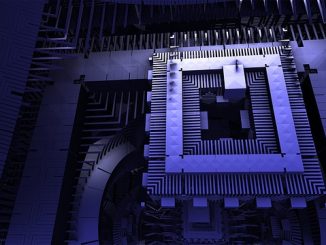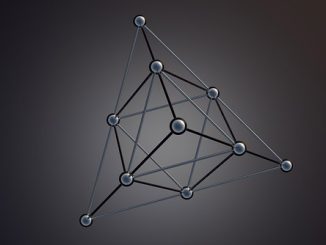
For the first time, the theoretical discovery of topological insulators (TIs) has reached a practical application. A topological insulator is a rather odd phase of matter that has a tendency to carry quantum nature currents along only the surface and not through the bulk of the material. Thanks to David J Thouless, Duncan M Haldane and J Michael Kosterlitz, three British-born scientists who in 2016 won the Nobel Prize in Physics for pioneering the creation of controlled defects in quantum mechanical states of matter known as condensates or superfluid phase, shrinking an electrical component to a size that will help the development of a scalable general-purpose quantum computer may now be possible.
As reported in the journal Nature Communications, a team of scientists from the University of Sydney and software giant Microsoft (NASDAQ:MSFT), in collaboration with Stanford University in the US, have developed a way to shrink a common circulator device by making it a 1,000 times smaller. A circulator is a multi-port electrical component in which signals entering one of the ports are transmitted to the strictly specified port in sequence. Until now, the smallest version of a circulator could be held in the palm of your hand. However, by miniaturizing the device by a factor of 1,000, the breakthrough, coined by the Sydney team as a ‘microwave circulator’, could in the near future allow the device as a passive electronic component to be used in technologies ranging from the field of nanoscale electronics to quantum computers.
“Such compact circulators could be implemented in a variety of quantum hardware platforms, irrespective of the particular quantum system used,” says the study’s lead author and PhD candidate, Alice Mahoney.
It should be noted that while the invention of the microwave circulator is only an incremental step in quantum computing, it’s still a very important one when it comes to devices and quantum computers that exploit TIs’ attractive properties. The potential that the newly found phase of matter has in terms of helping develop a circulator that can be integrated on a chip that will be needed to build quantum computers, consists in the fact that it could become essential if we want to squeeze large number of qubits into a small-enough space. But reducing qubit-size to such levels where we can literally shove hundreds of thousands, or even millions of them into a small-enough space remains a challenge and a potential showstopper.
“Even if we had millions of qubits today, it is not clear that we have the classical technology to control them,” says David Reilly, a physicist at the University of Sydney and Director of Microsoft Station Q.
As potential candidates to power future quantum computers, qubits, also known as quantum bits, have the ability to take on the form of either 1 or 0, or 1 and 0 simultaneously. The ability to perform tasks simultaneously while a quantum computer is in a state of decoherence is known as quantum parallelism.
Reilly also said that “Realising a scaled-up quantum computer will require the invention of new devices and techniques at the quantum-classical interface.”
Obviously, advancements in the field of quantum computing will only happen once we have perfected the technique of shrinking the size of qubits by an order of magnitude. In fact, new research conducted recently by startup company Delft Circuits has shown that just like qubits, a new superconducting transmon qubit design could become a standard in quantum computing efforts. After featuring fast tunability, the design resulted in the shrinking of the size of such qubits by an order of 10, an exponential change that has enabled transmon qubits to scale much faster towards a working quantum computer than any other qubit.
It goes without saying that we’re still years away from a practical computer that can effectively harness the principles of quantum mechanics. But if companies like search giant Google, Microsoft, Intel, D-Wave and IBM keep forging ahead with their advances, it won’t be long before the nascent quantum computing industry will reach “quantum speedup” levels, solving problems in fields like chemistry, finance, material science, medicine and physics that are not even feasible today. The implications of such new capabilities will ultimately make a profound difference in productivity-impacting the economy and society as a whole.
- Bulenox: Get 45% to 91% OFF ... Use Discount Code: UNO
- Risk Our Money Not Yours | Get 50% to 90% OFF ... Use Discount Code: MMBVBKSM
Disclaimer: This page contains affiliate links. If you choose to make a purchase after clicking a link, we may receive a commission at no additional cost to you. Thank you for your support!





Leave a Reply